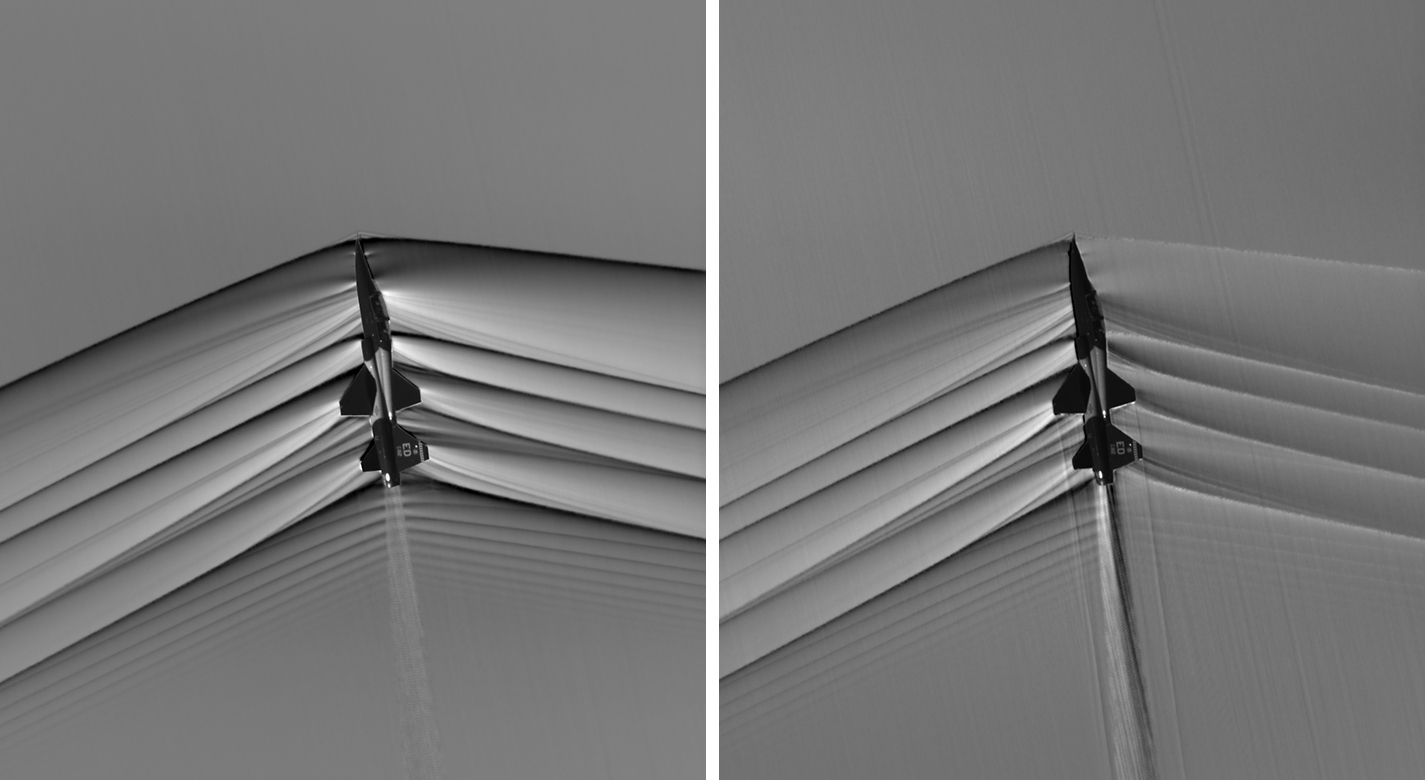Airborne Background Oriented Schlieren Technique
aerospace
Airborne Background Oriented Schlieren Technique (TOP2-271)
Patent Only, No Software Available For License.
Overview
NASA has developed a novel method to render visible the density changes in air that cause a refractive index change by an airborne vehicle. These density changes include shock waves, vortices, engine exhaust, and wakes. The determination of location and strength of shockwaves and vortices is fundamental to understanding the flow around an aircraft. These features are strong enough to affect the environment that the vehicle inhabits: for example, they can cause drag and/or produce undesirable noise. The researcher must be able to predict and mitigate the effects of these flow features. This invention is a robust visualization technique that will permit the measurement of the strengths and positions of shock waves caused by supersonic vehicles. The technique is applicable to all flight regimes, however, and can be used for visualizing tip vortices, engine exhaust plumes.
The Technology
This invention is an imaging method that requires very simple optics on an airborne vehicle, a camera with an appropriate lens, and an area on the ground that provides visual texture. The complexity with this method is in the image processing and not as much with the hardware or positioning, making Background Oriented Schlieren (BOS) an attractive candidate for obtaining high spatial resolution imaging of shock waves and vortices in flight. First, images are obtained of a visually textured background pattern from an appropriate altitude. Next, a series of images are collected of a vehicle in flight below the observer vehicle and over the same spot on the ground that serves as a background pattern. Shock waves are deduced from distortions of the background pattern resulting from the change in refractive index due to density gradients. The invention requires special software to create the schlieren images. The schlieren image is a contour plot of a two-dimensional data array of measured distortions, in pixel units. The results are used by researchers to help understand the flow phenomenon and compare to computational models. The BOS method also yields measured deflection distances, which can be used to determine the strength of a given density gradient. The system design and flight planning were based on the camera characteristics, airplane coordination, and airspace limitations.

Benefits
- Capture more density gradients details at higher magnifications than other methods
- Gradients can be mapped in any orientation
- The software registers the data image to the reference image which makes the technique robust in off-nominal conditions
- Tracks the movement of the target aircraft to permit averaging and direct velocity measurement
- Requires very simple optics and cameras on an inexpensive air platform
Applications
- Aerospace Industry
- Vortices tracking around airport
- Validate design models of future prototype and demonstrator low-boom aircraft


